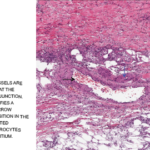
insta_photos / shutterstock.com
In the early 1900s, the treatment for rheumatic and musculoskeletal disease (RMD) was primarily targeted at symptomatic relief and included analgesics, physical therapy, splinting and bed rest. With the discovery of methotrexate and its impact on rheumatoid arthritis (RA) management, a much-needed evolution of medications targeting disease activity began.
Over the past 30 years, several medications have been added to the armamentarium for rheumatic diseases, starting with medications now considered disease-modifying anti-rheumatic drugs (e.g., sulfasalazine, hydroxychloroquine, methotrexate). With the late 1990s came biologic therapies, including monoclonal antibodies and genetically engineered proteins that target cytokines and cell surface molecules.1
This pharmacologic evolution has greatly improved the lives of those with RMD; however, work disability, fatigue and the need for psychosocial support remain concerns. Team-based interventions, including non-pharmacologic, have also emerged as priorities for both patients and provider teams.
Patient and provider opinions differ regarding treatment priorities.2,3 Physicians excel at tracking the number of swollen joints, pain level, labs and global measures, but patients would also like their fatigue, stiffness, self-management, participation, sleep, emotional distress and daily functioning addressed. This is much more than a rheumatologist can address in an office appointment, especially in areas of the country with limited access to specialists.
Enter the healthcare extender.
A holistic approach to caring for patients with RMD goes beyond the medications that help prevent disease progression and damage. It requires a team of practitioners, each with their own expertise, to contribute to an individual’s quality of life.
To help meet the needs of the patient population with RMD, rheumatologists can look to advanced practice providers (APPs), including physical therapists (PTs), occupational therapists (OTs) and pharmacists. Other APPs that rheumatology practices should consider to meet varying patient needs are physician assistants (PAs), nurse practitioners (NPs), dietitians and social workers. Developing relationships with these practitioners early in their disease process can help patients preserve function, reduce pain and increase their ability to participate in activities of daily living.4
PTs
PTs can do much more than help patients with a hot joint to improve function. They can develop individualized physical activity plans for patients and suggest changes patients can make to adapt to the cyclical nature of their disease.
Doctorally prepared PTs are at the forefront of prevention and wellness for those with neuromusculoskeletal conditions and are starting to make inroads into primary healthcare.5 They are important patient advocates in developing accommodation plans in line with the Americans with Disabilities Act. They are experts in non-pharmacological pain management, particularly as it affects mobility, activity, fatigue and sleep.



